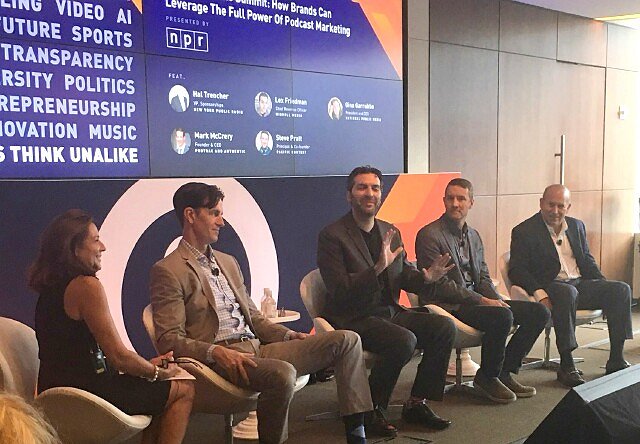
It is hard to wrap your head around the myriad events associated with Advertising Week. This year the excitement ratcheted up for all things technology, specifically augmented reality, virtual reality, artificial intelligence and especially audio communication. All these efforts are currently impacting and will continue to impact the media industry, placing strains on traditional business models and enabling new cutting-edge companies. But a simple overview of all these technological bells and whistles belies some crucial brand and media oriented trends on consumer behavior. Here are some takeaways:
Just like the early cave paintings, images today are taking on a major form of communication and storytelling. We are moving from the word to the image to express ourselves in the forms of photos, videos and emojis. In fact, according to Lydia Daley, Senior Vice President Social Media and Branded Content Strategy, Viacom, "Visual imaging is currently the major form of Millennial communication." Millennials value experiences over material things and are seeking authenticity in their interactions with brands. It is simply not enough to talk the talk. Brands need to demonstrate that they are good citizens with a compelling story.
Audio Is Not Only Not Dead, It Is Poised to Rule
As technology advances and households continue to adopt voice activated appliances, audio is slated to become even more popular as a way to communicate. Just as Millennials are gravitating toward images, Gen Z is moving to audio. Why bother searching the Internet when you can simply request Alexa to find the content for you? "Podcasts will explode," as part of this audio-ification of communication, said Susan Panico, Senior Vice President, Strategic Solutions, Pandora. Marketers will have to consider how they can best leverage podcasts and other audio formats to reaffirm their branding and best reach their consumers.
Gina Garrubbo (pictured at top left), President and CEO, National Public Media, emphasized the importance of what she termed “host driven authenticity” as an essential ingredient in both the strong connection that listeners have for audio content and in turn the efficacy of program advertising.
Data Buzz Continues
Data and its related topics of measurement, attribution and blockchain technology were discussed at many panels because, as the old saying goes, if you can't measure it, you can't monetize it. Simulmedia's CEO and Founder Dave Morgan believes that "the biggest advancements in advertising over the next two years will happen in measurement and attribution." This is already happening "as advancements in matching media exposures and purchase data at real scale" are leading to "real ROI analysis at a tactical, per campaign level," he said.
But there is still some trepidation concerning data quality. "Advertisers can buy an incredible array of very precise customer targets now, but no one really knows what they are buying," noted Scott McDonald, President and CEO of the ARF. "We need much better standards around data quality to provide better guidance to the market.
"An unambiguous rating system that can offer an independent 'grade' on the quality of data sold for ad targeting," might be possible in the next two years, he optimistically added.
Viewing Patterns are Evolving
According to Cindy Davis, Executive Vice President, Consumer Experience, Disney | ABC Television Group, the multi-platform environment is evolving into a new way for families to co-view. Her department launched a new research study called "Togetherish" that examines the evolving way that households watch, share and engage with content. "Consumers are changing very rapidly," she noted. "We must understand what viewers want and what motivates them. We want to know where viewing is going across devices and platforms."
What the study revealed is that there are eight types of households each with their own viewing dynamic. "All types watch over 20 hours per week and all types find value in ad-supported content," Davis explained. While 57% of all of these homes watch TV alone, this is deceiving. Because of the plethora of devices, no one really watches totally alone anymore. In fact, of that 57%, 21% are actually communicating with others virtually while viewing, leading to the term convergent viewing. "Convergent viewing heightens engagement," Davis noted. "They watch virtually together. They watch more deeply and feel deeply connected to characters on an emotional level. We also see higher brand metrics across the board with convergent-viewed shows."
This article first appeared in www.MediaVillage.com
